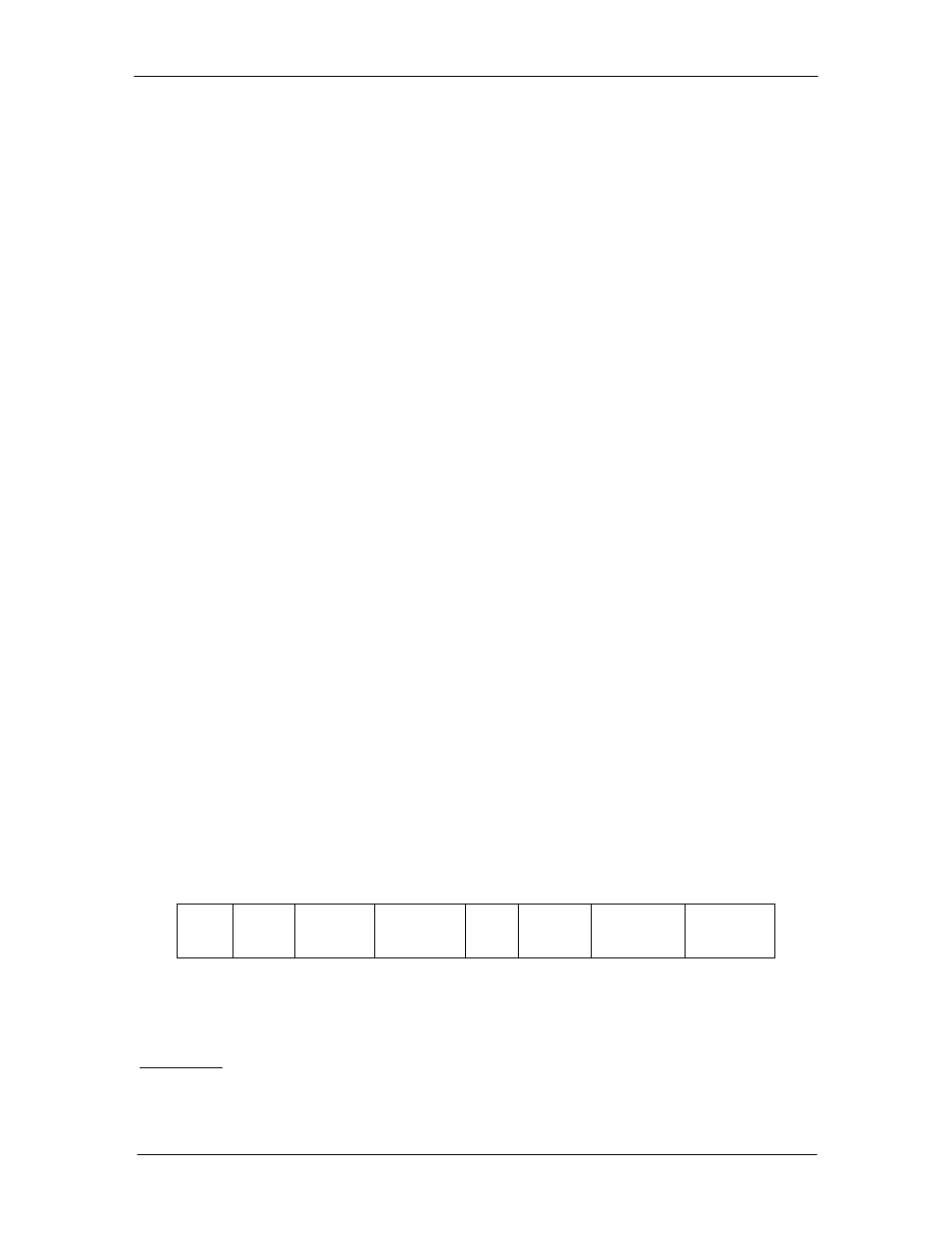Comtech EF Data QAM256 User Manual
Page 62

QAM256 Digital Video Modulator and Upconverter
Remote Operations
TM077 – Rev. 4.0
C-
7
If the RLLT receives the packetized message from the sender before it times out, it checks
for any error messages appended by the IOPT. In the absence of errors, the RLLT processes the
received command sent via the transmitted packet and issues a "message out" system call to
ultimately acknowledge the received packet. This call generates the response packet conveyed to
the sender. If the IOPT sensed errors in the received packet and an RLLT timeout has not
occurred, the RLLT causes the equipment to issue the appropriate error message(s) in the
pending equipment response frame.
To maintain frame synchronization, the IOPT keeps track of error-laden packets and packets
intended for other equipment for the duration of each received packet. Once the packet is
complete, the IOPT invokes an I/O wait state and searches for the next
C.1.8 RLLP Summary
The RLLP is a simple send-and-wait protocol that automatically re-transmits a packet whenever
an error is detected, or when an acknowledgment (response) packet is absent. During
transmission, the protocol wrapper surrounds the actual data to form information packets. Each
transmitted packet is subject to time out and frame sequence control parameters, after which the
packet sender waits for the receiver to convey its response. Once a receiver verifies that a packet
sent to it is in the correct sequence relative to the previously received packet, it computes a local
checksum on all information within the packet excluding the
processes the packet and responds to the packet sender with a valid response (acknowledgment)
packet. If the checksum values do not match, the receiver replies with a negative
acknowledgment (NAK) in its response frame.
The response packet is therefore either an acknowledgment that the message was received
correctly, or some form of a packetized NAK frame. If the sender receives a valid
acknowledgment (response) packet from the receiver, the
is transmitted as required by the sender. However, if a NAK response packet is returned the
sender re-transmits the original information packet with the same embedded
If an acknowledgment (response) packet or a NAK packet is lost, corrupted, or not issued due to
an error and is thereby not returned to the sender, the sender re-transmits the original information
packet; but with the same
packet is acknowledged with a response packet and internally discarded to preclude undesired
repetitive executions. If the M&C computer sends a command packet and the corresponding
response packet is lost due to a system or internal error, the computer times out and re-transmits
the same command packet with the same
an acknowledgment or a NAK packet.
To reiterate, the format of the message block is shown in Table 4, Link Level Protocol
Message Block
Sync Count Source
Address
Destinati
on
Address
FSN Opcod
e
Data
Bytes
Checksu
m
Table 4. Link Level Protocol Message Block
RLLP Remote Communications Examples
Example #1
Query Common Control Mode
Example Parameters:
